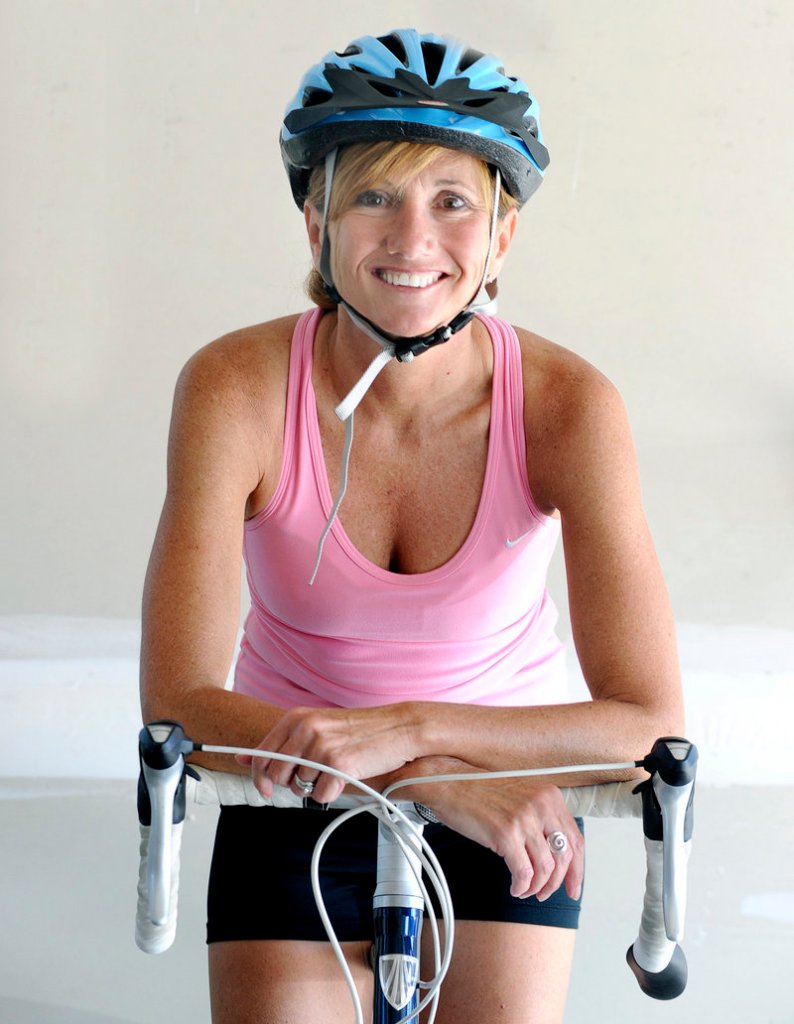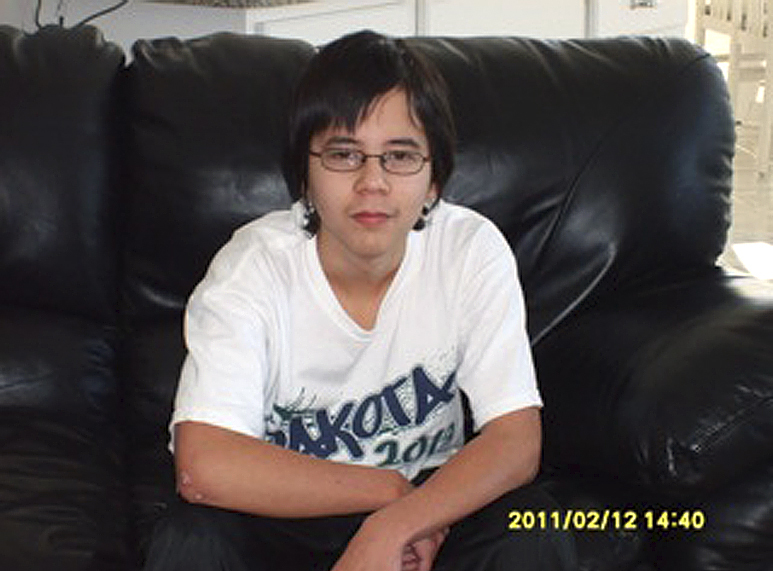On his 16th birthday next Sunday, Zach Ubl will be waiting at the finish line of the Tri for a Cure Triathlon for the woman who is dedicating her race to him.
Ubl, of Macomb, Mich., doesn’t have much in common with 47-year-old Raffaella Peters of Westbrook. Not geography, nor ethnicity, nor gender, nor age.
But the two have compatible bone marrow, which they have shared since Oct. 4, 2004, when Ubl received a transplant from Peters to combat his leukemia.
“I get choked up and my heart starts racing when I think about finally meeting him,” Peters said. “I think it’s going to be a pretty emotional weekend.”
The emotions that surround cancer will be palpable when the women-only triathlon, established just three years ago, attracts a full field of participants to the campus of Southern Maine Community College in South Portland.
All 850 participant spots available were filled within four minutes when online registration opened for the event, which benefits the Maine Cancer Foundation.
Tri for a Cure raised $1 million last year, and sponsors are hoping to do even better Sunday.
“Women can make things happen,” said founder Julie Marchese, a breast cancer survivor.
The race does not raise funds for cancers that are specific to women, but it is restricted to women in order to maintain a unique energy, Marchese said.
“The whole day is about hugging and emotions, crossing the finish line and making dreams happen. Something that was meant to be a feeling race just needed to be women,” she said.
Peters dedicated her last Tri for a Cure to her parents, who both died of cancer.
This year, she’s racing for Ubl, who she will meet for the first time a few days before the race, when he and his father, Jim Ubl, fly into Portland to watch Peters run, bike and swim.
Peters has photos of Zach Ubl, showing his transformation from a bald little boy to a dark-haired young man in a black suit, dressed for a school dance.
“This year it’s about focusing on survival. There’s hope there,” she said, indicating the photos. “He’s proof of that … a completely thriving teenager.”
Peters’ eyes water when she talks about the lost lives that inspired her to support cancer research and why she decided to register her marrow in 1993, when a local toddler needed a match.
“Having the opportunity to give marrow has meant everything to me. It’s part of who I am now and I feel fortunate to be a part of something like this. I feel like I have been given a gift,” she said.
“The discomfort (of marrow harvesting) is nothing. It’s so minor in relation to what it’s doing … (it’s ) part of a treatment process that saves someone’s life.”
Jim Ubl, in a phone interview from Michigan, recalled the day his son was diagnosed with acute lymphoblastic leukemia at age 4 and admitted to treatment the same night.
He recalled, too, the two years of school missed for treatments, the constant blood sampling, the chemotherapy, and how Zach Ubl turned purple from head to toe when his body initially rejected transplanted bone marrow.
“I don’t think you can ever say that we’re home free,” he said. “Statistically, if you stay cancer-free for five years there’s a real good chance of living a normal life, and he has reached that mark.”
Ubl said every day after cancer feels like a celebration.
Zach Ubl’s day-to-day life has normalized significantly. He runs track, does tae kwon do, reads and watches anime. Despite missing two years of school, he has straight A’s and takes advanced placement courses.
He doesn’t dwell much on his memories of cancer, but said he remembers losing his ability to walk — until his sister devised a game in which he would pursue her around the house.
When he did get better, in 2005, Zach sent Peters a Christmas card.
Patients who receive anonymous bone marrow donations are able to contact their donors after a year.
“I’m looking forward to meeting the person that helped save my life,” he said of Peters.
Everyone who attends Tri for a Cure will have a chance to register their bone marrow. Representatives of DKMS, short for Deutsche Knochenmarkspenderdatei (German for Bone Marrow Donor Center) will be present to take quick cheek swabs. DKMS is the largest worldwide donor center, with over 2.8 million registered donors and over 26,000 matches.
Charissa Kerr of DKMS said one of the people who registered two years ago at the Tri for a Cure was a match for a person with cancer and donated bone marrow in May.
The chances of being a match are less than 1 in 10,000. Prospective donors who are found to be a match can donate marrow through peripheral blood stem cell collection, which is similar to donating blood platelets, or through a surgical process under anesthesia.
Kerr noted that thousands of people with leukemia and other life-threatening diseases depend on finding matching donors, yet even with a registry, six out of 10 patients never get a transplant.
“Donors of all ethnicities are needed if we are going to change this,” she said.
Jim Ubl, who is Vietnamese, said he worried that because of his ethnicity, his son wouldn’t be able to find a bone marrow match.
“But then he got one from a complete stranger in some other place. That is the part people need to understand. They could potentially be a match for anyone in the world,” he said.
“And give the ultimate gift … the gift of time.”
Staff Writer Colleen Stewart can be contacted at 791-6355 or at:
cstewart@pressherald.com
Send questions/comments to the editors.




Success. Please wait for the page to reload. If the page does not reload within 5 seconds, please refresh the page.
Enter your email and password to access comments.
Hi, to comment on stories you must . This profile is in addition to your subscription and website login.
Already have a commenting profile? .
Invalid username/password.
Please check your email to confirm and complete your registration.
Only subscribers are eligible to post comments. Please subscribe or login first for digital access. Here’s why.
Use the form below to reset your password. When you've submitted your account email, we will send an email with a reset code.